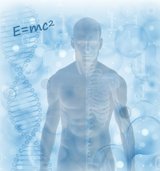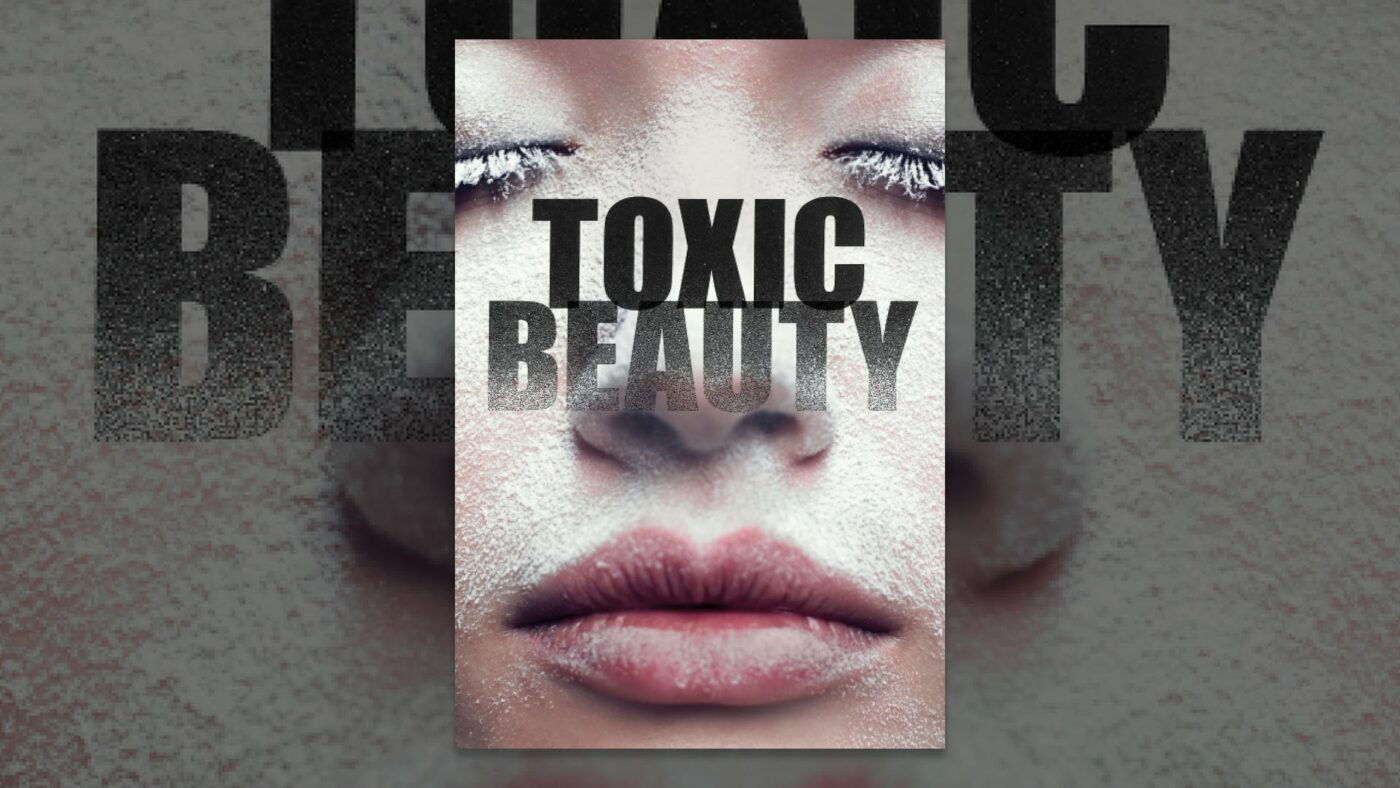Health and Wellness
Did You Know About Toxic Beauty?
A lot of individuals think that what we find on the shelves in shops or what we buy online (from a reputable company of course) is safe for our health. Add in a little marketing jargon like “all-natural” “organic” “botanical ingredients” and you might just take a second look.
Cosmetic and personal care products are often laden with harmful chemicals that can affect our health in various ways. And even if we are conscious of it, it’s always important to remind ourselves of these.
Each morning we spritz and slather ourselves in over 100 different chemicals – yet the cosmetics and personal care industry in North America is not required to prove an ingredient is safe for human health before it is on the shelves. Toxic Beauty addresses what it calls an attitude of silence around carcinogenic and hormone-disrupting substances found in previously approved and popular cosmetic items in the US cosmetics market. The documentary follows UC Davis graduate Mymy Nguyen after she has recovered from a benign cancer attributable to inappropriate use of talcum powder. Nguyen attempts to identify and replace various cosmetic items she has come to depend on while seeking further awareness and knowledge on reparation, or lack thereof, from the cosmetics industry.
The film interviews doctors, lawyers, and scientists to explore how products are made, and compares a long struggle with the cosmetics industry to decades of public pressure for reforms against the tobacco industry in the 1960s. It claims that
thousands of dangerous chemicals in popular cosmetic products in the USA are unregulated, not even requiring appropriate warning labels when toxic substances have been identified.
The relevant legislation is based on 1930s law and favors a "post market regulatory system", even though the act is updated and enforced to cover similar issues in food and drugs. With the assistance of environmentalist author Rick Smith, Nguyen explores the effects of certain substances on the body as well as the effectiveness of recovery.
One of the victims featured in the documentary turned down a $1.3m settlement offer from Johnson & Johnson so that she could publicize her experience with a court case.
One of the main issues in the documentary surrounds the popular Johnson & Johnson baby powder product. Johnson & Johnson denied knowledge of carcinogens in its baby powder but were revealed to have known about them since the 1960s after being sued by 22 claimants in 2018, incurring $4.7 billion in damages. Subsequently, a further 11,700 claimants pursued damage claims against the company.
COMMON HARMFUL TOXINS IN PERSONAL CARE PRODUCTS
Some ingredients with known health hazards are very common in personal care products, which includes both commercial and alternative "natural" products. We are providing information on some of these common ingredients.
DEA, TEA, MEA - Diethanolamine (DEA), triethanolamine (TEA), and monoethanolamine (MEA) are hormone disruptors. They are also known to combine with nitrates to form cancer-causing nitrosamines. If a product contains nitrites (used as a preservative or present as a contaminant not listed on labels) a chemical reaction can occur either during manufacturing or after a product is made. There is no way to know which products contain nitrosamines because government does not require manufacturers to disclose this information on the label.
A 1997 study by the U.S. National Toxicology Program found that these compounds themselves might also be carcinogenic. Repeated skin application of DEA was found to cause liver and kidney damage in animals. The study also discovered that when absorbed through the skin, DEA accumulated in organs. TEA may also cause contact dermatitis in some individuals.
Dioxins - You won't find dioxin listed on ingredient labels. It's formed as an accidental by-product of a manufacturing processes using chlorine, especially paper bleaching and the creation of plastic. Dioxin is one of the most powerful carcinogens known and accumulates in body fat. Mainstream deodorants and anti-bacterial soaps are suspect. Chlorine bleached tissues, toilet paper and cotton balls can contain dioxin. Plastic bottles may leach dioxin into creams, shampoos and other products we use daily.
DMDM Hydantoin, Diazolidinyl Urea and Imidazolidinyl Urea - DMDM hydantoin, diazolidinyl urea and imidazolidinyl urea are preservatives that release formaldehyde. It is estimated that 20% of people exposed to this chemical will experience an allergic reaction. Exposure to formaldehyde may cause joint pain, depression, headaches, chest pains, ear infections, chronic fatigue, dizziness and loss of sleep. In lab tests, formaldehyde has caused cancer and damaged DNA. Formaldehyde is a known sensitizer. Imidazolidinyl urea may cause contact dermatitis in some individuals.
FD&C Colors - Used extensively in personal care products, FD&C colors are made from coal. Coal tar colors have been found to cause cancer in animals and many people experience allergic reactions like skin irritation and contact dermatitis. They are listed as FD&C or D&C, followed by a color and a number. Example: FD&C Red No. 6, or D&C Green No. 6.
Fragrance - Synthetic fragrance is the most common ingredient found in personal care products. "Fragrance on a label can indicate the presence of up to 4,000 separate ingredients. Most or all of them are synthetic. Symptoms reported to the FDA have included headaches, dizziness, rashes, skin discoloration, violent coughing and vomiting, and allergic skin irritation. Fragrance is a known trigger of asthma. Many of the compounds in fragrance are suspected or proven carcinogens. Phthalates in perfumes are known hormone disruptors. In 1989 the US National Institute of Occupational Safety and Health evaluated 2,983 fragrance chemicals for health effects. They identified 884 of them as toxic substances. The US Environmental Protection Agency found that 100% of perfumes contain toluene, which can cause liver, kidney and brain damage as well as damage to a developing fetus.
Lanolin - Lanolin is a common allergen and because of this has been replaced in many products. But there is another reason to be cautious about lanolin. Lanolin is derived from sheep's wool. It may contain residues of insecticides into which sheep are dipped to control external parasites. These insecticides are fat-soluble. Dr. Samuel Epstein, chairman of the Cancer Prevention Coalition, says these chemicals are likely to migrate through the skin and into the bloodstream. However, some sheep producers now control parasites by injecting sheep with insecticides, which work by circulating through the animal's bloodstream. The best way to know if the lanolin in a personal care product is free of insecticide is to look for a certified organic product. Uncontaminated lanolin is perfectly safe, although it can cause contact dermatitis in some people. Lanolin oil, a more refined product, has been found to have little insecticide residue. Purified lanolin oil is a healthy product, as long as you aren't allergic to it.
Lead - Lead is a known carcinogen and hormone disruptor. It is readily absorbed through the skin, and accumulates in the bones. It causes neurological damage and behaviour abnormalities, and large accumulations can result in leg cramps, muscle weakness, numbness and depression. Lead is found in some hair dyes.
Nonylphenols - This estrogen-mimicking chemical is a surfactant used for its detergent properties. It can be found in some plastics, as well as shaving creams, shampoos and hair colors. It can be created when certain chemicals commonly found in personal care products break down. Nonylphenols can be a component in polyvinyl chloride (PVC), a compound often found in acrylic nails. They are persistent in the environment and of such concern that many European countries are phasing them out. Some manufacturers have voluntarily discontinued their use.
Parabens - An estrogen mimic, parabens are preservatives with antibacterial properties. Widely used in all kinds of personal care products, paraben is usually preceded by the prefixes methyl-, ethyl-, butyl-, or propyl-. Parabens can cause allergic reactions or contact dermatitis in some people. Preservatives are one of the leading causes of contact dermatitis. There are safer practical alternatives to parabens, including vitamin E, vitamin C and grapefruit seed extract.
PEG - Polyethylene glycol (PEG) is used in cleaners and some oven cleaners to dissolve oil and grease. It can also be found in many personal care products. PEG may be contaminated with 1,4-dioxane, a carcinogen. Dioxane readily penetrates the skin. While dioxane can be removed from products easily and economically by vacuum stripping during the manufacturing process, there is no way to determine which products have undergone this process. Labels are not required to list this information.
Phenylenediamine - Used in permanent hair dyes, phenylenediamine can cause eczema, bronchial asthma, gastritis, skin irritation and even death. It is also a carcinogen. It can react with other chemicals to cause photosensitivity. The US Food and Drug Administration proposed legislation which would have required warning labels on products, advising that this ingredient can penetrate skin and has been determined to cause cancer in lab animals. If passed, beauty salons would have had to post warnings for their customers. Cosmetic industry lobbyists defeated the proposal.
Phthalates - Everyone in the general population is exposed to phthalates from one source or another. They are found in many products from plastics to shampoo. These hormone-disrupting chemicals are suspected of contaminating breast milk and causing damage to the kidneys, liver, lungs and reproductive organs. One type of phthalate, diethyl phthalate (DEP) is commonly found in fragrances and other personal care products. Phthalates are used to enhance fragrances, as solvents, and to denature alcohol. A study published in Environmental Health Perspectives (December 2002) found that DEP is damaging to the DNA of sperm in adult men at current levels of exposure. DNA damage to sperm can lead to infertility and may also be linked to miscarriages, birth defects, infertility and cancer in offspring. DEP is the phthalate found in the highest levels in humans. Recent product tests found the chemical in every fragrance tested in the United States. Manufacturers are not required to list phthalates on product labels, so they are difficult to avoid.
Polysorbate 60 and Polysorbate 80 - Polysorbate 60 and polysorbate 80 may be contaminated with 1,4-dioxane, a carcinogen. Dioxane readily penetrates the skin. While dioxane can be removed from products easily and economically by vacuum stripping during the manufacturing process, there is no way to determine which products have undergone this process. Labels are not required to list this information.
Propylene Glycol - Propylene glycol is recognized as a neurotoxin by the National Institute for Occupational Health and Safety in the U.S. It is known to cause contact dermatitis, kidney damage and liver abnormalities. It is widely used as a moisture-carrying ingredient in place of glycerine because it is cheaper and more readily absorbed through the skin. The Material Safety Data Sheet for propylene glycol warns workers handling this chemical to avoid skin contact.
Quaternary Ammonium Compounds (Quats) - Listed on labels as benzalkonium chloride, cetrimonium bromide, quaternium-15 and quaternium 1-29, these compounds are caustic and can irritate the eyes. Quaternium-15 is a formaldehyde releaser and the number one cause of preservative-related contact dermatitis. There is concern about their potential as sensitizers. For about 5% of people, quats are an extreme sensitizer and can cause a variety of asthma-like symptoms, even respiratory arrest. When they are used with hot running water, steam increases the inhalation of vapors. These compounds are used in a wide range of products as preservatives, surfactants and germicides. They make hair and skin feel softer immediately after use but long-term use will cause dryness.
Sodium Lauryl Sulfate, Sodium Laureth Sulfate - This chemical is a known skin irritant and enhances allergic response to other toxins and allergens. The U.S. government has warned manufacturers of unacceptable levels of dioxin formation in some products containing this ingredient. The chemical can react with other ingredients to form cancer-causing nitrosamines. Sodium lauryl sulfate is used as a lathering agent. It is present in ninety per cent of commercial shampoos, as well as skin creams and some brands of toothpaste.
Sodium laureth sulfate may be contaminated with 1,4-dioxane, a carcinogen. Dioxane readily penetrates the skin. While dioxane can be removed from products easily and economically by vacuum stripping during the manufacturing process, there is no way to determine which products have undergone this process. Labels are not required to list this information.
Talc - Talc is a naturally occurring mineral which is carcinogenic when inhaled. In addition, women who regularly use talc in the genital area are at increased risk for ovarian cancer. Airborne talc in body powders and antiperspirant sprays can irritate the lungs. Talcum powder is reported to cause coughing, vomiting, and even pneumonia. Many pediatricians now tell parents to avoid using talc on babies as it can cause respiratory distress, sometimes resulting in death. Talc is found in blushes, face powders, eye shadows, liquid foundation and skin fresheners. Used near the eyes, it can irritate sensitive mucous membranes. Talc in liquid formulations poses minimal risk.
The Facts:
- One-third of all personal care products contain one or more ingredients classified as possible human carcinogens.
- 89% of 10,500 ingredients used in personal care products have NOT been evaluated for safety.
- Over the last 30 years, only 9 of the 10,500 ingredients used in personal care products have been banned or restricted.
Source: (EWG)
The Answer:
Keep it simple and safe with non-toxic All Natural Personal Care Products! Stick to Natural Organic Products because they work ...and you ARE worth it!
The Benefits:
- Lowered Health Risks - Decreasing exposure to synthetic and toxic chemicals could mean a lower risk of allergies and chemical sensitivities, and a lowered risk of cancers and other illnesses.
- Avoid the Toxins - Organic products are much healthier for the environment, the people who cultivate them, and the people who use them.
- Cleaner waterways - Toxic chemicals from non-natural and non-organic products are rinsed off your body and down the drain, potentially contaminating rivers, streams, and harming aquatic life.
- Protect animal friends - Most natural organic products are cruelty-free.
- Safer - Only 11% of the more than 10,500 ingredients used in personal care products have been screened for safety.
Protect yourself from toxic overload! Keep safe with natural products instead!
Side Note: The chemicals present in any personal care product alone are unlikely to cause immediate harm.
The Issue Is ...
We are being repeatedly exposed to toxic chemicals from multiple sources on a daily basis, which long-term can be detrimental to our health. Some chemicals used in personal care products are carcinogens. This means that there have been many studies that show that exposure to a certain chemical can result in cancer in humans or in laboratory animals.
Our Point Is ...
Products would be safer without the chemicals that we know can cause cancer, birth defects, allergies and/or contribute to other serious health conditions.
That Is Why ...
We recommend natural and organic products as alternatives to avoid or at least limit the synthetic and toxic chemicals found in conventional products.
Body-Field Scan
Ready to find out what's impacting your energy levels by using our bioenergetic scanning technology. Check out your body’s energy with a Body-Field scan and gain deeper insight into your holographic self with our certified Bioenergetic Practitioner. For an In-Clinic visit click here, or, for a Telehealth (remote) session click here.
We offer a completely new, alternative and bioenergetic health care approach based on 21st century science, technology and quantum physics with personalized, holistic therapy solutions such as, NES body-field scan & therapy, miHealth biofeedback, PEMF, Rife and Vibroacoustic (VAT) healing modalities that can restore optimal health and well-being throughout the body, mind and spirit in the most natural way. Let us help you restore your health and energy!






